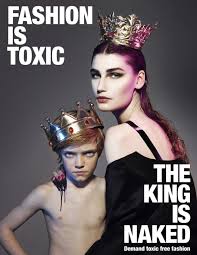The other day, a gorgeous Hugo Boss dress caught my attention. I wasn’t really intending to buy anything, but it was so beautiful, I just had to try it on. The shop assistant and I agreed that the dress looked great on me. But that’s where my doubts started – even if it looked just right, was the dress really the right thing to buy?
As I cycled home, in my head the dress got prettier, but the doubts got bigger. It carried a hefty price tag, and I really did not need another dress. I already have quite a nice collection and I don’t need to dress up as much for my current job as I have had to for previous roles. When I got home, I went to check the sustainability credentials of Hugo Boss, hoping that would provide a bit of extra rationale to buy the dress. What I found confirmed that it was a good thing I did not buy that dress.
Rank a Brand provides information on brands’ sustainability credentials. Their research on sustainable fashion gave Hugo Boss an “E” score, among the lowest in the industry. As most of the low score was due to lack of publicly available information, I was hoping the Greenpeace Detox Catwalk would shed more light on Hugo Boss, but they’re not mentioned on their list of fashion companies.
 As I was searching for more information, I did come across Greenpeace’s fairy tale analogy about the emperor’s new clothes and the naked king. Very well done and I hope it gets as much media attention as the catwalk did!
As I was searching for more information, I did come across Greenpeace’s fairy tale analogy about the emperor’s new clothes and the naked king. Very well done and I hope it gets as much media attention as the catwalk did!
But back to Hugo Boss. A general search on Google yielded little more insight. There were a few mentions of environmental initiatives, but they were all quite dated and turned out to be part of the Hugo Boss Perfume franchise, which is run by Procter&Gamble. The sustainability information on Hugo Boss’ website talked a lot about policies and intentions, but besides a mention of the Global Reporting Initiative (GRI) in their 2012 annual report, the company does not report on any sustainability progress and metrics. I just hope they realize that the Global Reporting Initiative’s mission is to get all organizations to report on their sustainability performance, and that the internal use of the GRI Guidelines (as a reference for collecting and analyzing environmental data) is a key step on the way to public disclosure to its many stakeholders. Including me, so I can really determine whether I can “afford” to buy that specific dress.
The article that brought it all together was from the Guardian, published in July 2013, a few months after the Rana Plaza disaster, titled “Will transparency in the fashion industry ever become a reality?”. I really hope transparency will help the industry transform itself. In the meantime, I will just continue to wear the most sustainable fashion of all: things that I already own, complemented by vintage from the nearby second-hand store – and perhaps a few new things from real eco-designers.
Please let me know what your favorite eco-fashion designers and shops are!

Sad to see that Hugo Boss fulfilled my negative preconception when it comes to fashion and sustainability. A rate E is really bad and it makes you wonder about the beautiful design of their clothes.
Fashionable question: Baghuis takes us through customer journey | To buy or not to buy? http://t.co/1oDOB27GBu
To buy or not to buy? The fashionable question #corporatereporting #transparency #CSR http://t.co/XmRiq7oHu0
To buy or not to buy? The fashionable question … http://t.co/jKY9x7Y0Or
ApTo buy or not to buy? The fashionable question … http://t.co/H1TPjEupCD
New on my blog: To buy or not to buy this Hugo Boss dress? The fashionable sustainability question of the day http://t.co/EqSB5F0s5v